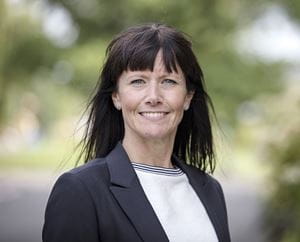The European Insulation Manufacturers Association EURIMA has published a statement on the significance of mineral insulation in the quest to achieve net zero greenhouse gas emissions. Buildings use approximately 40 per cent of all energy consumed in the EU and are responsible for 36 per cent of the union's CO2 emissions. Most of the carbon dioxide emissions of the life cycle of buildings are produced during the buildings’ use – through heating, cooling and electricity use. Therefore, good building insulation and the energy efficiency it achieves cannot be emphasised too strongly. A significantly smaller amount of the overall emissions, approximately 20 per cent, stems from the construction phase and building materials.
Insulation and energy efficiency go hand in hand
 EURIMA believes that it is possible to achieve a highly energy efficient and carbon neutral building stock by 2050, but it will require swift and vigorous actions from many operators – also from the insulation industry itself. The importance of increasing the number of renovation projects and choosing the materials with care will stand out in the bigger picture because the building stock in use in 2050 will largely consist of buildings which already exist now. Now, only 1% of buildings in Europe undergo energy efficiency renovation every year although approximately 75% of the current building stock is energy inefficient. Additionally, energy inefficiency is very expensive for Europeans: the substandard thermal efficiency of our homes and offices mean that Europeans are wasting €270 billion per year (1) when paying their energy bills.
EURIMA believes that it is possible to achieve a highly energy efficient and carbon neutral building stock by 2050, but it will require swift and vigorous actions from many operators – also from the insulation industry itself. The importance of increasing the number of renovation projects and choosing the materials with care will stand out in the bigger picture because the building stock in use in 2050 will largely consist of buildings which already exist now. Now, only 1% of buildings in Europe undergo energy efficiency renovation every year although approximately 75% of the current building stock is energy inefficient. Additionally, energy inefficiency is very expensive for Europeans: the substandard thermal efficiency of our homes and offices mean that Europeans are wasting €270 billion per year (1) when paying their energy bills.
Mineral wool is the most commonly used insulation in Europe. Thus, the manufacturers have two distinct opportunities to significantly impact the reduction of carbon emissions during the life cycle of buildings:
According EURIMA's vision, our built environment will be climate neutral, implement circular economy and conform to the general sustainable development goals by 2050. All these are important themes for Paroc as well.
Paroc's sustainable development goals support carbon neutrality and circular economy
Owens Corning has set ambitious sustainability objectives for 2030 for the whole company. One example of these objectives is to reduce carbon emissions by 50 per cent from the 2018 level.
Paroc has created its own sustainable development goals, which are in line with Owens Corning's objectives, and has determined concrete measures to achieve them. By 2030, Paroc intends to:
In early 2021, Paroc will launch a new stone wool insulation product line which will meet the needs to minimise the construction industry's CO2 emissions. The product line's carbon neutrality is based on a low-carbon melting technique; the use of green energy; utilising recycled raw materials, and new production technologies, which will minimise the CO2 emissions of its production. Any remaining carbon will be compensated.
Insulation is a central solution for lowering the CO2 emissions of buildings and thus, also reducing climate change. Paroc wants to participate actively in the development of sustainable solutions with other construction industry parties – the company's own sustainable development goals and measures are part of this work

Beatrice Hallén
Sustainability Leader
Insulation Europe, Owens Corning
(1) Eurima: https://www.eurima.org/energy-efficiency-in-buildings/new-and-existing-buildings.html